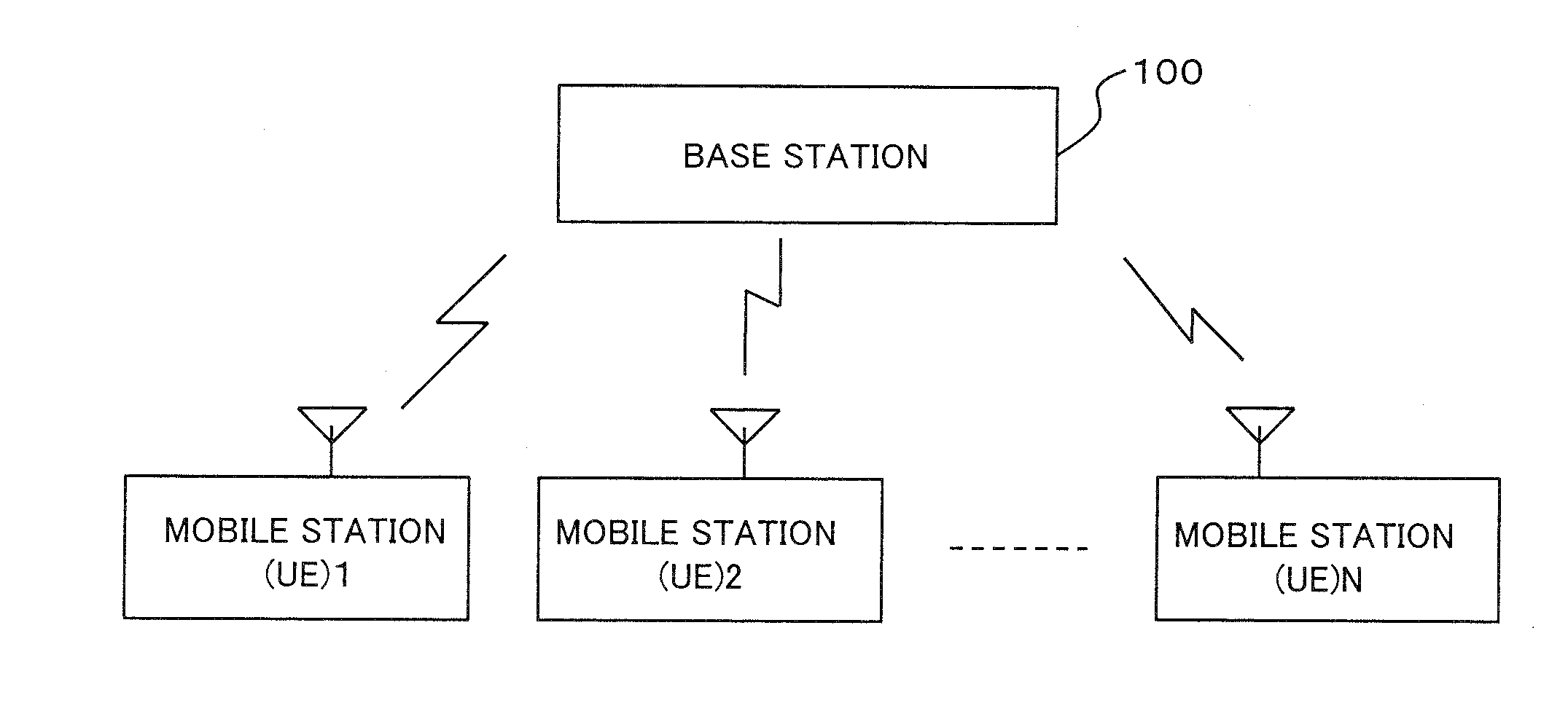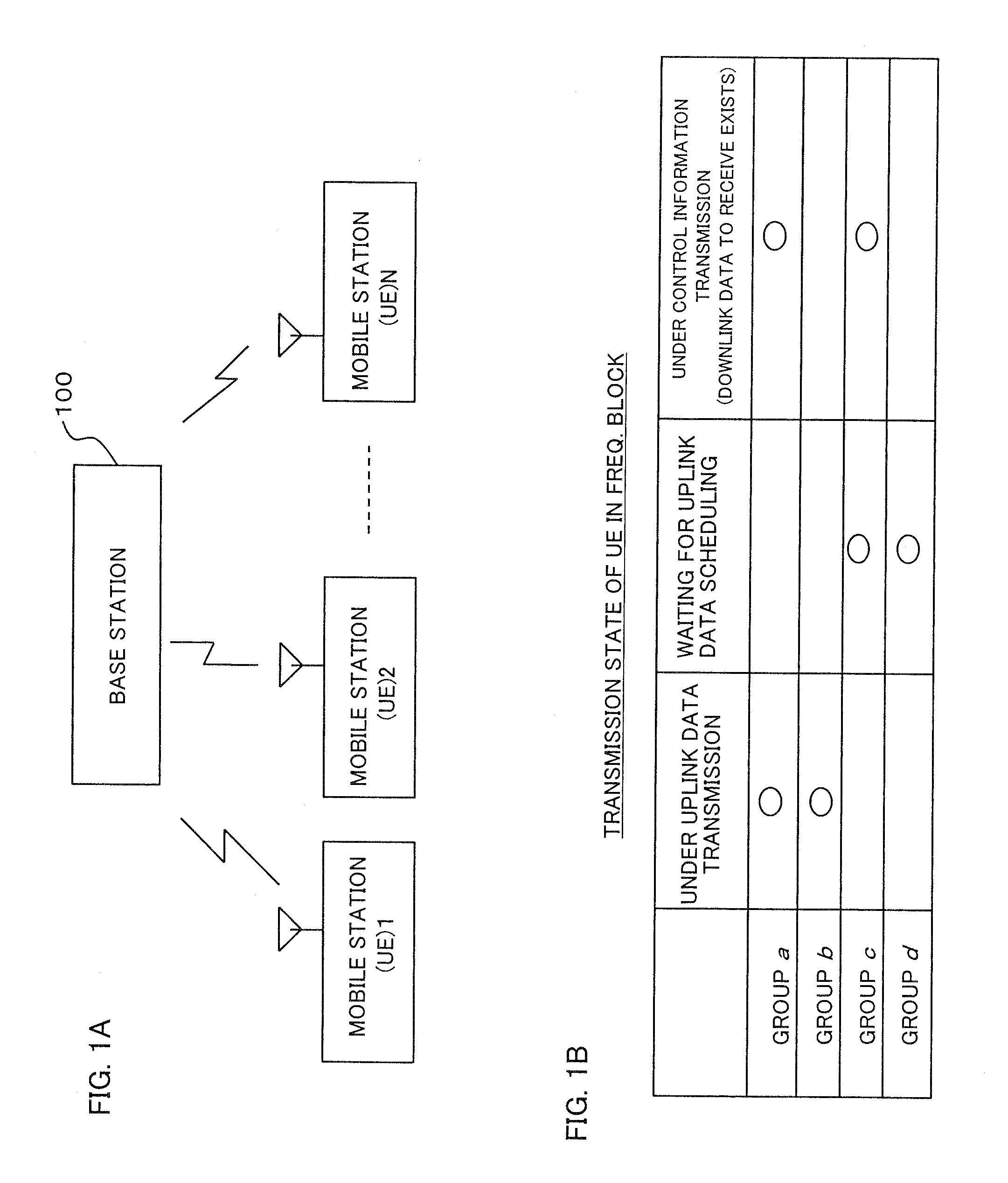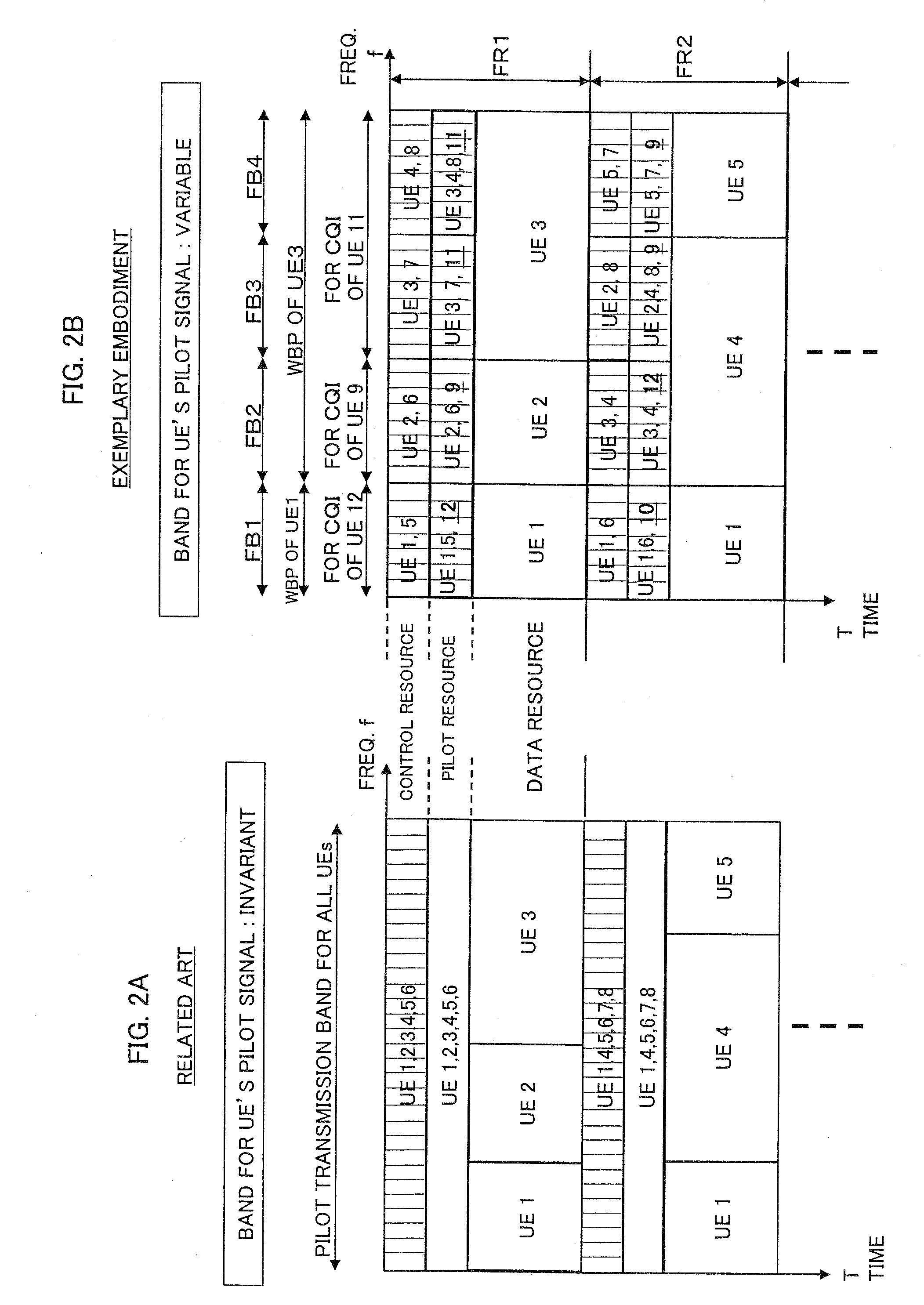Method for measuring channel quality and base station in mobile communications system
a mobile communications system and channel quality technology, applied in the field of mobile communications systems, can solve the problems of large overhead, inability to efficiently allocate pilot resources, and inability to efficiently allocate pilot resources, and achieve the effect of small overhead and efficient channel quality measuremen
- Summary
- Abstract
- Description
- Claims
- Application Information
AI Technical Summary
Benefits of technology
Problems solved by technology
Method used
Image
Examples
first exemplary embodiment
1. First Exemplary Embodiment
1.1) Resource Allocation
[0039]FIG. 2B is a diagram schematically showing the allocation of a resource for channel quality measurement according to a first exemplary embodiment of the present invention. In this exemplary embodiment, a control signal, pilot signal (also referred to as reference signal), and data signal are time-division-multiplexed (TDM) in each frame (also referred to as sub-frame). The resources to be allocated in one frame FR, in each frequency block FB, are referred to as a control resource, a pilot resource, and a data resource. Note that a control signal in this example is an uplink control signal regarding a downlink data signal (called data non-associated control signaling) and contains a downlink CQI, ACK / NACK indicating whether or not downlink packets have been correctly received, or the like.
[0040] In addition, four frequency bands (frequency blocks FB1 to FB4) are illustrated here to simplify the description. However, the nu...
second exemplary embodiment
2. Second Exemplary Embodiment
[0099]FIG. 11 is a block diagram showing configurations of a base station and mobile station in a mobile communications system according to a second exemplary embodiment of the present invention. However, since the configuration of a base station 100 is substantially the same as that of the base station according to the first exemplary embodiment shown in FIG. 3, the same reference numerals as in the first exemplary embodiment will be used, and the detailed description thereof will be omitted. Moreover, the configuration of a mobile station 200 also is basically the same as that of the mobile station according to the first exemplary embodiment shown in FIG. 7, except that a transmission mode selection section 207 is provided in the second exemplary embodiment. Therefore, the same reference numerals as in the first exemplary embodiment are given to the blocks having the same functions as the counterparts in the first exemplary embodiment shown in FIG. 7,...
first example
2.1.1) First Example
[0104]FIG. 13 is a flow chart showing a first example of the process in the step S320 in FIG. 12. First, the scheduler 103 determines whether or not the CQI-specific pilot resource can be allocated (step S321). If it can be allocated (step S321: YES), the control goes back to the step S311 in FIG. 12, where the allocation of the CQI-specific pilot resource is carried out (step S311). Thereafter, the processing in the above-described step S312 and subsequent steps is carried out.
[0105] If it is impossible to allocate the CQI-specific pilot resource because of the insufficient resource or the like (step S321: NO), the scheduler 103 controls the control signal generation section 106 to have it generate a downlink control signal indicating that the CQI-specific pilot resource is not allocated, transmits the downlink control signal to the mobile station 200 (step S322), and then waits for a response from the mobile station 200. The downlink control signal here is tra...
PUM
 Login to View More
Login to View More Abstract
Description
Claims
Application Information
 Login to View More
Login to View More - R&D
- Intellectual Property
- Life Sciences
- Materials
- Tech Scout
- Unparalleled Data Quality
- Higher Quality Content
- 60% Fewer Hallucinations
Browse by: Latest US Patents, China's latest patents, Technical Efficacy Thesaurus, Application Domain, Technology Topic, Popular Technical Reports.
© 2025 PatSnap. All rights reserved.Legal|Privacy policy|Modern Slavery Act Transparency Statement|Sitemap|About US| Contact US: help@patsnap.com



